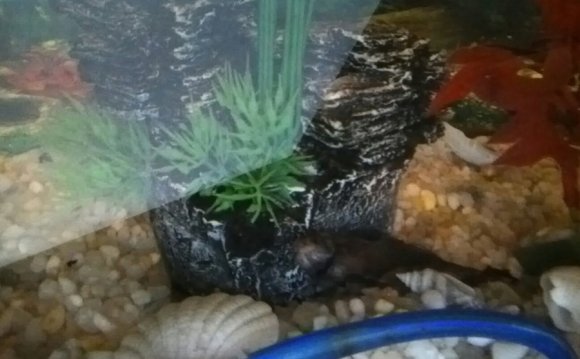
 Quarantining fish before adding them to the main aquarium or when they’re sick is a very important part of fishkeeping, but it’s often overlooked even by more experienced aquarists because they think it’s too expensive to buy another tank or because they simply can’t wait to put the new fish in the aquarium.
Quarantining fish before adding them to the main aquarium or when they’re sick is a very important part of fishkeeping, but it’s often overlooked even by more experienced aquarists because they think it’s too expensive to buy another tank or because they simply can’t wait to put the new fish in the aquarium.
In the previous article, What is a quarantine tank?, you can read more about what a quarantine tank/tub is and why you should really have one ready at all times – in this article, I’ll be answering some questions about the easiest and cheapest ways to set up a good quarantine tank and which equipment you’re going to need.
May long-time fishkeepers usually have a spare tank lying around that can be used to quarantine fish. If you don’t, a food-safe Sterilite tub works perfectly for quarantining as well and is much cheaper than an actual glass tank. How big it should be depends on the fish that’s going to be in it – for a betta or groups of small schooling fish, a 7 gallon (26l) is fine. For bigger fish that produce a lot of waste, like goldfish or angelfish, go for something bigger like this 26, 5 gallon (100l) so you don’t have to change crazy amounts of water every day!
- Quarantine tank/tub
- Heater (when dealing with tropical fish)
- Small filter (optional) and/or air pump
- Some type of hiding place for the fish (plants often work well)
It is also a good idea to always have the more basic types of fish medication and aquarium salt on hand. That way you don’t have to run out to the store if the fish does turn out to be sick!
- If you are setting up a quarantine tank to temporarily quarantine a new addition to your aquarium (to make sure no diseases are present) and don’t plan on using medication that damages your beneficial filter bacteria such as antibiotics, it’s a good idea to use cycled filter material in the filter. That way the quarantine tank is instantly cycled and you don’t have to do water changes every day. If you’re not sure how the cycle in an aquarium works, have a look at this article for more information.
- If you’re setting up a quarantine tank because you have a sick fish and need to use harsh medication or salt, using cycled filter material is pretty much pointless because the beneficial bacteria will soon die off, ending the cycle.
 You can use fresh filter material and will unfortunately have to do a lot of water changes.
You can use fresh filter material and will unfortunately have to do a lot of water changes.
- To set up your quarantine tank/tub, just place it on a flat surface like a table, desk or on the floor, preferably in a room where it’s relatively quiet.
- Fill it up with half conditioned water and half water from the tank the fish is currently in (to lessen stress) and place the heater, filter/air pump and hiding places in it. Add the correct dose of medicine or aquarium salt if necessary – be sure to pre-dissolve salt in a different container.
- As soon as the heater has done its work (the water in the quarantine tank should be the same temperature as the water the fish is currently in), you can start acclimating the fish. Don’t just throw it in there! It needs some time to adjust to 50% tap water and possibly medication/salt.
How often a water change should be done depends on how heavily the quarantine tank is stocked and whether the filter is cycled or not. If the filter is cycled, full water changes aren’t necessary and you can just do partial water changes regularly based on the stocking level. If your quarantine tank is uncycled, it’s a different story and you’ll have to do 100% water changes to prevent ammonia buildup. To do this, you can carefully guide the fish into a smaller container. Put the lid on and put it in a safe place (preferably somewhere slightly darker) where no one can bump into it while you empty and refill the quarantine tank with water of the same temperature and, if necessary, redose the medication or salt. Then you can float the smaller container in the big tank/tub while acclimating the fish and release it after 10-15 minutes.
Hopefully this little guide has helped convince you that setting up and maintaining a quarantine tank isn’t expensive/difficult at all. It will actually save you time, money and stress by preventing disease from spreading and making medicating fish easier.
I first worked with a quarantine tank when I got a new goldfish and it was very reassuring to know that it eliminated the risk of him passing on any diseases to my other fish. You never know, even your absolute favourite fish store in the world may accidentally get in a sick batch of fish. And if they do, you’ll be prepared.









